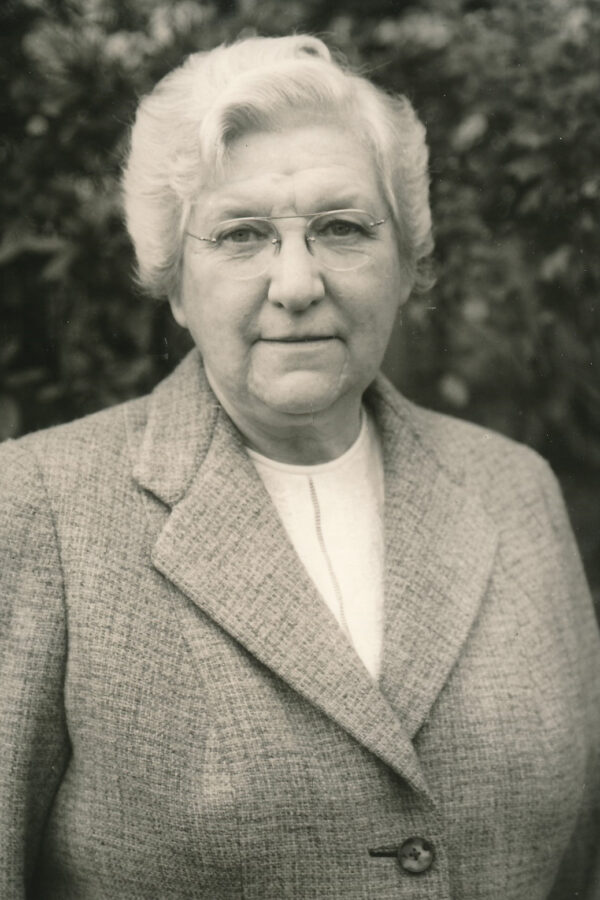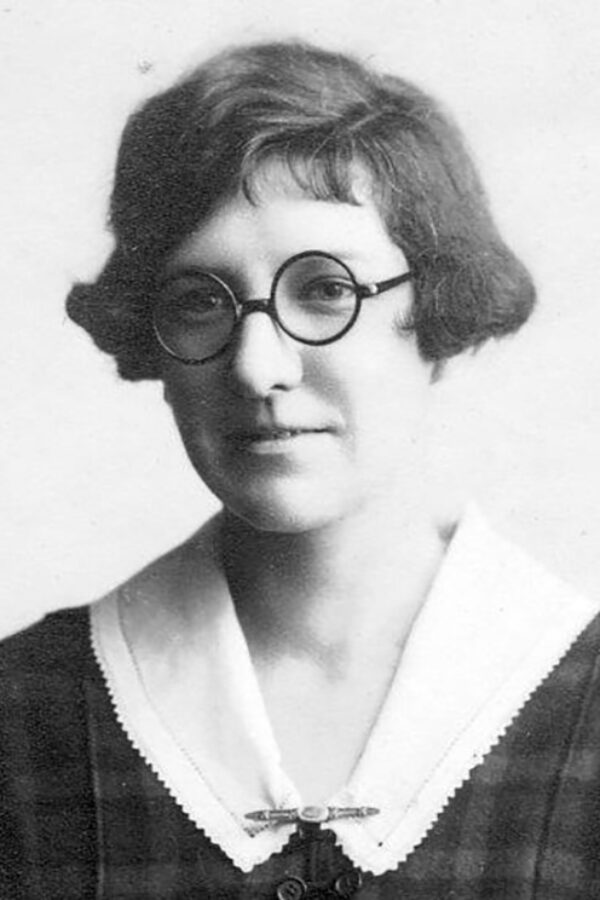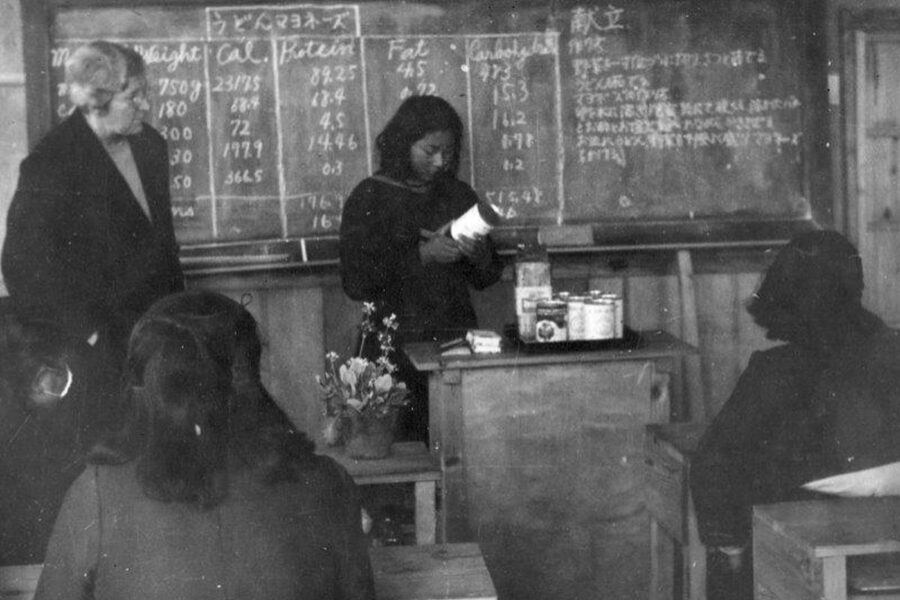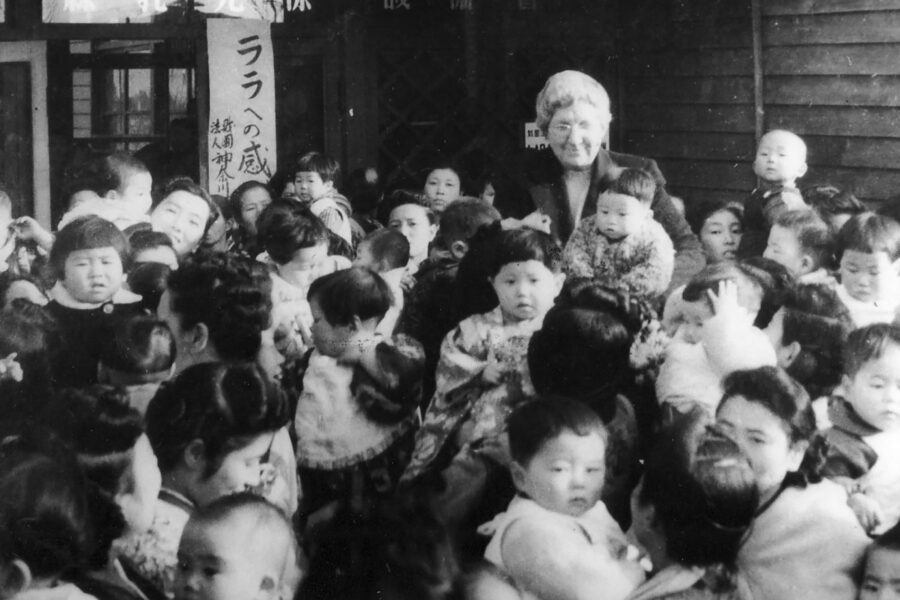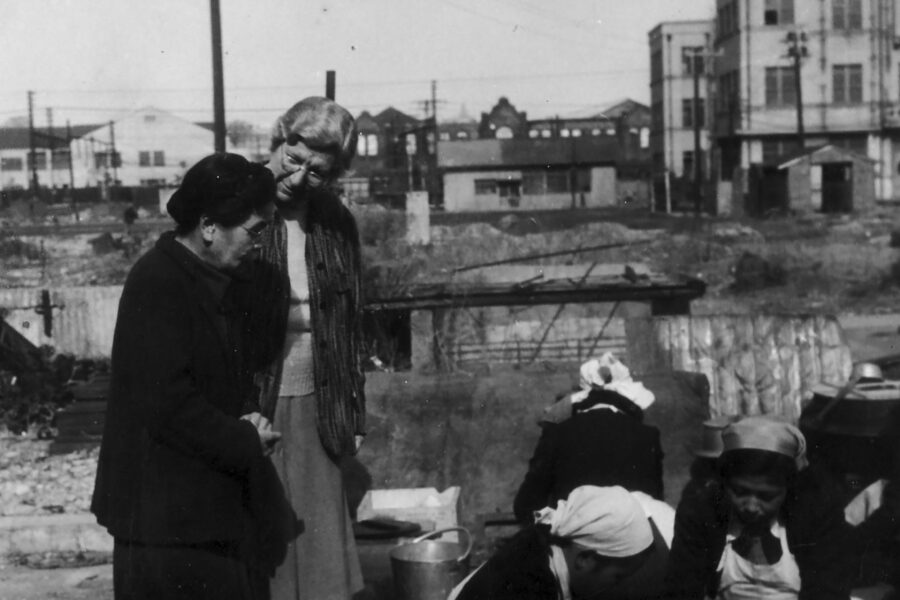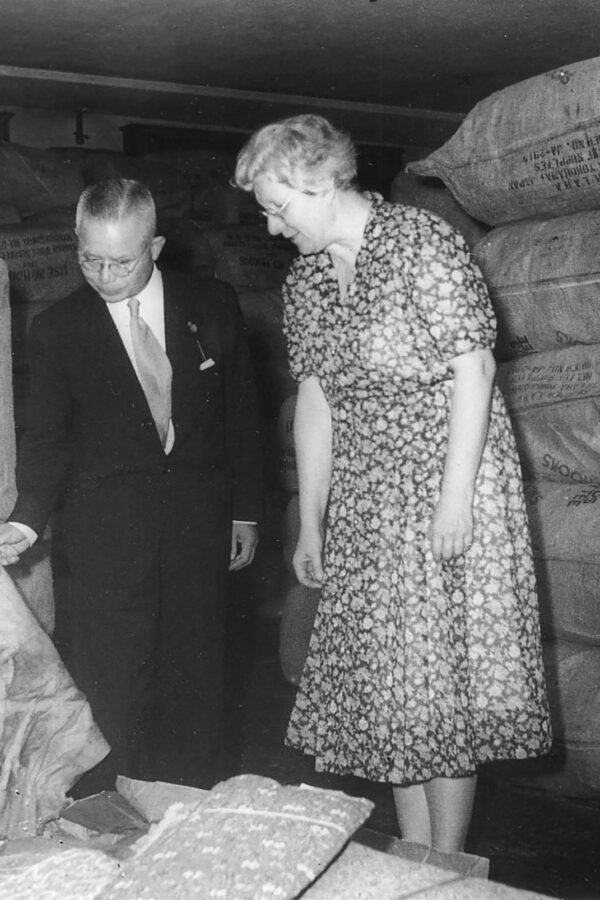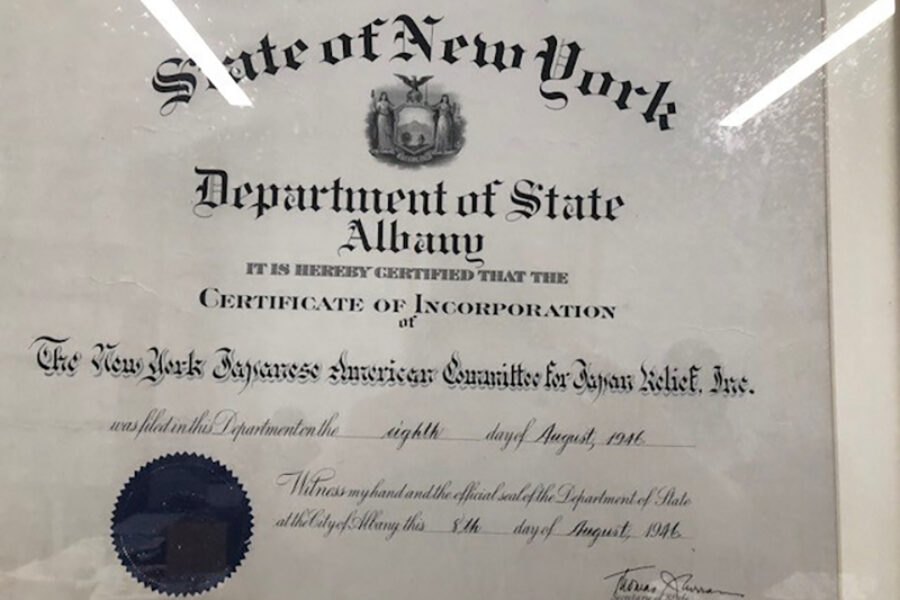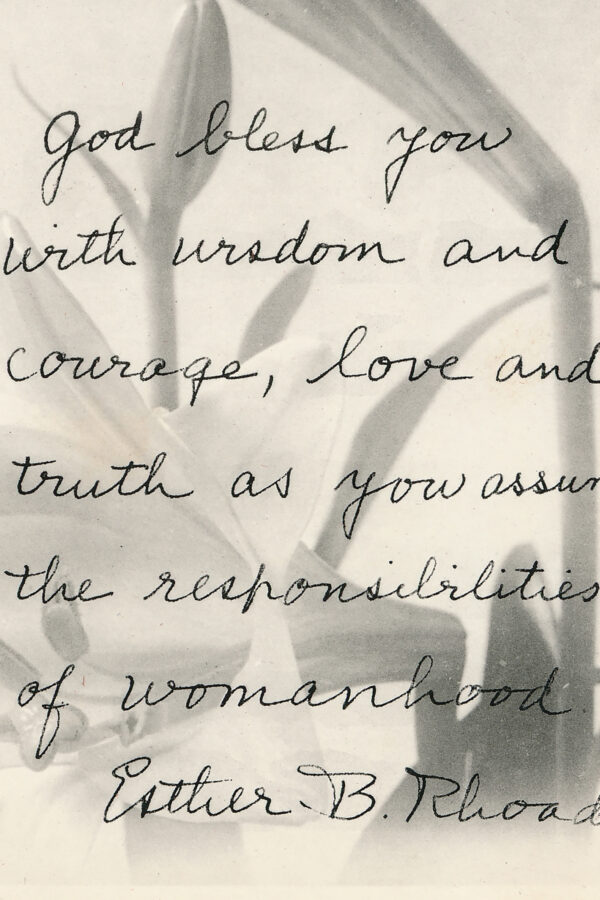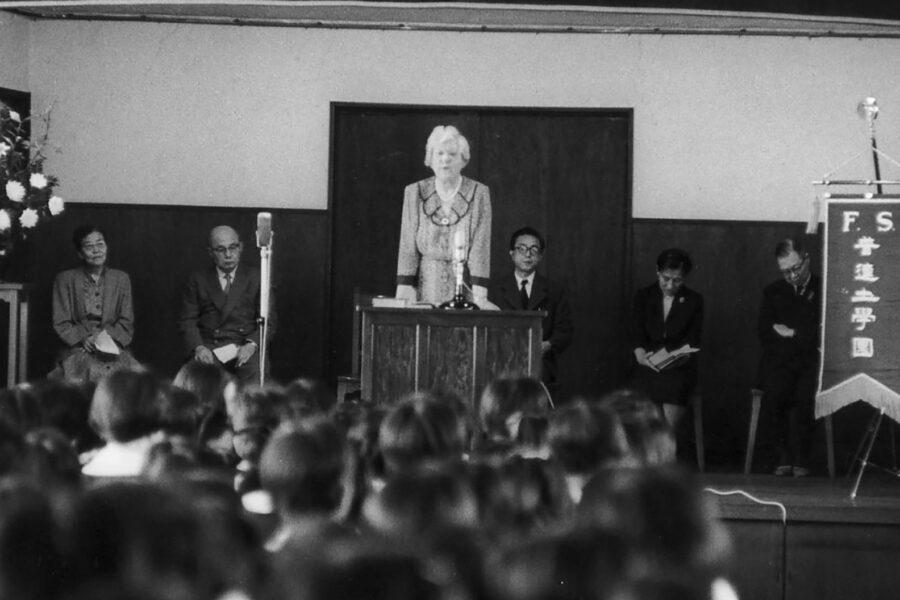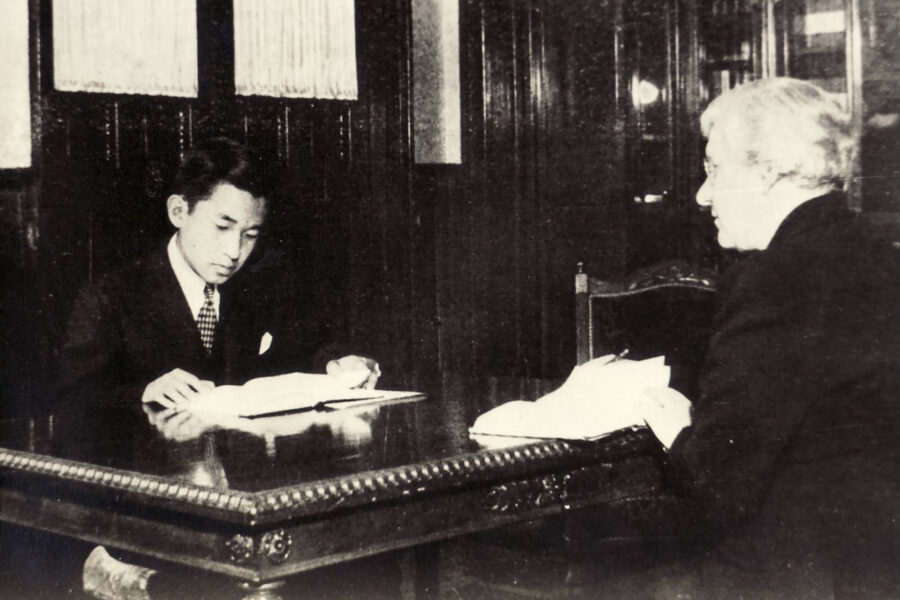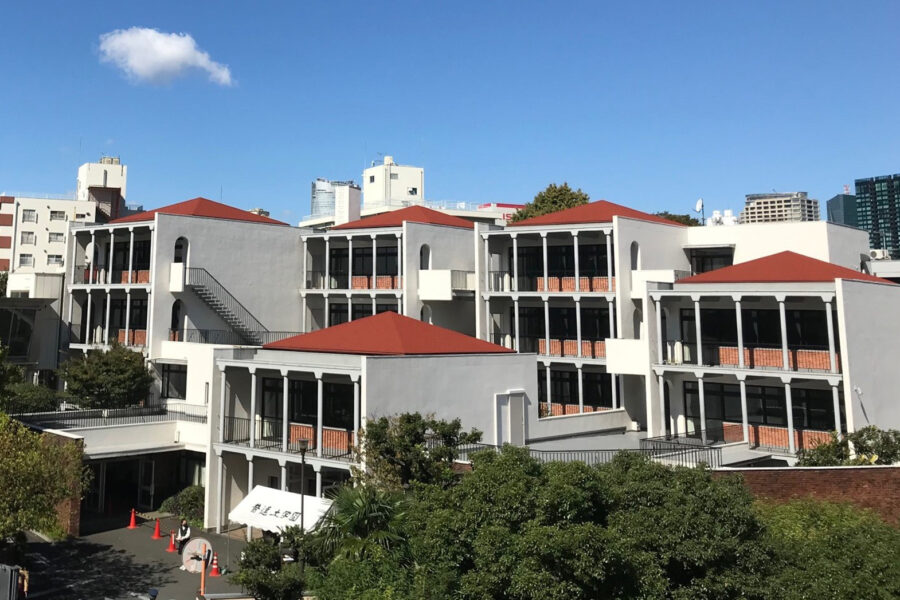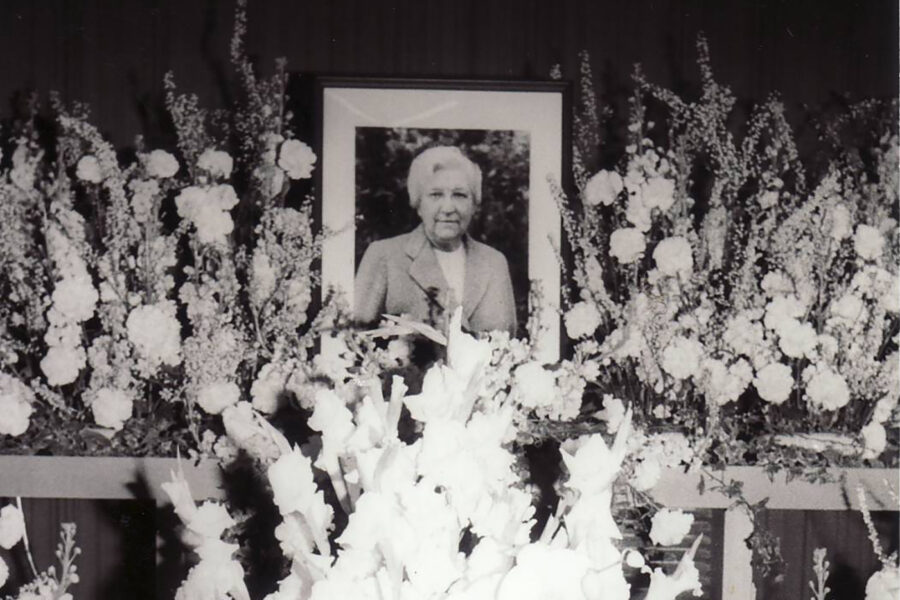Additional Stories
Beyond the advancement of women’s education, Quaker educators were heavily involved in humanitarian work in Japan. Esther Biddle Rhoads, a Columbia University graduate and Principal of the Friends Girls School in Tokyo, was one such individual. As a commissioner of Licensed Agencies for Relief in Asia, or LARA, Rhoads was responsible for coordinating emergency food, clothing, and supplies for tens of millions of Japanese citizens facing dire conditions after the end of WWII.
Esther Rhoads came from a prominent Quaker family in Philadelphia who were friends of Inazo Nitobe and the Elkintons. As such, she was inspired to travel to Japan as a missionary in 1917, then again in 1921 when she began teaching at the Friends Girls School.
In 1923, when the Great Kanto Earthquake struck and Anna Hartshorne traveled back to the United States to raise funds for Tsuda University, Rhoads was simultaneously aiding in rescue efforts in Tokyo—thus Quaker women in Japan were involved in a variety of relief efforts for those affected.
Several years later, Rhoads returned to the Unites States to earn a master’s degree in religious education from Teachers College, Columbia University in New York City. She lived at the International House during her studies and graduated from the program in 1927. Rhoads’ younger sister Caroline also earned a master’s degree from Teachers College and became an instructor there, where she taught until 1965. Their younger brother Jonathan became a prominent brain surgeon and eventually rose to provost of the University of Pennsylvania, from which position he was able to help his sister finance the activities of Friends Girls School in Tokyo.
The majority of Rhoads’ professional life was spent in Japan, where she taught female students for decades. She continued traveling back and forth between Japan and the U.S. until 1940 when the conditions of World War II prevented her from making the trip. Shortly thereafter, Rhoads started working for the Civilian Public Service Section of the American Friends Service Committee (AFSC). She moved to the Foreign Service Section in 1942 and was dispatched to the Southern California office of AFSC in Pasadena. There, she used her knowledge of Japanese language and culture to support Japanese Americans incarcerated in internment camps.
She visited a number of camps to listen to the voices of Japanese Americans and on several occasions testified on their behalf in public hearings. She also provided educational goods and toys to children, and relocated many of them to the East Coast where they could attend school. As the war progressed and it became clear that Japanese Americans posed no threat to national security, the War Relocation Authority (WRA) began establishing regional branch offices in cities outside of the Exclusion Zone to aid in the resettlement of citizens and aliens who had, according to the WRA, “proven their loyalty”.
At the request of AFSC, the WRA agreed to allow the creation of the National Japanese American Student Relocation Council (NJASRC) in May 1942, which began working to resettle the more than 2,500 Japanese American students whose college and high school educations had been interrupted by the incarceration. Rhoads assisted the program by helping students identify schools they could attend, obtaining academic certificates, writing recommendation letters and enrollment applications, obtaining government permits, and applying for scholarships, among other tasks. According to a 1945 report, 3,200 Japanese American students were relocated to 625 schools across the U.S. during this time.
Sustained lobbying efforts by personnel from the WRA Philadelphia branch office, NJASRC, and AFSC encouraged many incarcerated individuals to consider relocating to Philadelphia. In June, 1945, Rhoads returned from Pasadena to Philadelphia. Shortly after, she visited the State Department in Washington D.C. along with Passmore Elkinton (the nephew-in-law of Nitobe Inazo) to express her concerns over the indiscriminate bombing of Tokyo, which had occurred one month prior, and to protest further bombardments.
After the war ended, Rhoads was selected as one of the three commissioners of the “Licensed Agencies for Relief in Asia” (L.A.R.A.), which was organized in April 1946 as a single umbrella agency to represent and coordinate the private relief activities of eleven – ultimately fourteen – North American charitable and religious organizations that operated in Japan and Korea (LARA was based in New York City and coincidentally chaired by another Quaker). The core members were the Church World Service, AFSC, and War Relief Services. Rhoads returned to Japan in June 1946 and recounted that “as we approached Yokohama, destruction became noticeable and the city seemed practically leveled. I could see ruins of buildings on the bluff much like the scene after the [1923 Great Kanto] earthquake with piles of rubble.”
LARA was the sole U.S. agency through which welfare shipments in bulk received exemptions and priorities provided by GHQ (Allied General Headquarters). The distribution of relief supplies was done through Japanese welfare agencies on the basis of need without respect to birth, religion, or political affiliation and at no cost to the recipient. From November 1946 to June 1952, LARA distributed 33 million pounds of food, clothing, shoes, cotton, soap, medicine, as well as over 2 million pigs, 2,000 goats and 50 milk cows, transported by 458 ships in total. According to Rhoads, around 20% of these supplies were donations from Japanese nationals and Japanese descendants in North and South America, including Japanese Americans from New York.
Indeed, a dedicated group of Japanese Americans in New York began preparing to send relief to Japan in September, 1945. However, they faced initial resistance from the United States government which still considered many first-generation immigrants to be “enemy nationals” and, despite the enormous need for help in Japan, prevented the group from sending direct financial support until the following year. Finally, in mid-1946, the group received permission to begin work and they formally organized themselves as the “New York Japanese American Committee for Japan Relief.” The committee was appointed as one of the agencies authorized to work with LARA and began funneling support through the American Friends Service Committee in Philadelphia. Between 1946 and 1948, they successfully raised hundreds of thousands of dollars and sent a wealth of supplies including food and textiles to Japan. Later, the committee was renamed the Japanese American Association of New York (JAANY), which is an organization that remains active to this day.
Hachiro Yuasa (Chair)
Saburo Akamatsu (Vice Chair)
Toru Matsumoto (Secretary)
Takeshi Hohga
Giichi Kawamata
Seiichi Konokawa
Tsugio Okada
Soujiro Shimizu
Sannosuke Yamaguchi
Kanji Yasui
Students pose in the school yard in front of Joshi Eigaku Juku. Umeko Tsuda seated in the center of the front row, 1901, Courtesy of Tsuda University Archives
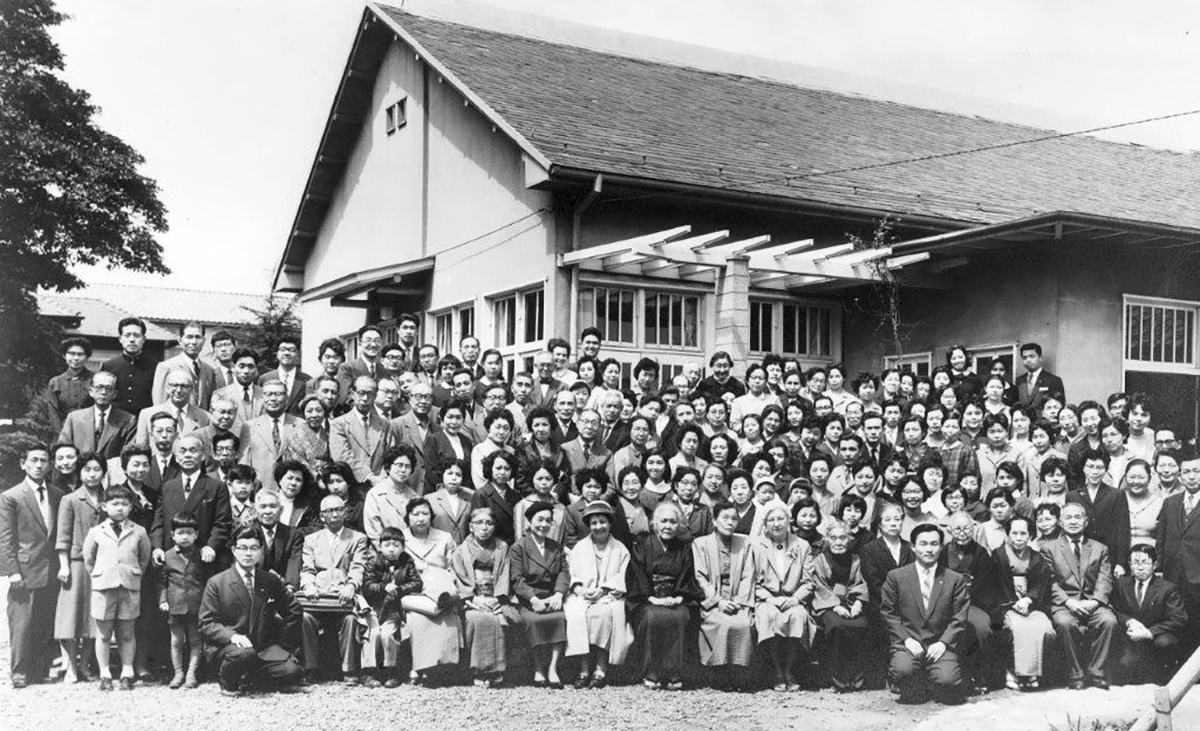
From 1950 to 1960, Rhoads took on another significant role as tutor to the Crown Prince Akihito. When the Prince later visited Philadelphia with Crown Princess Michiko in 1977, they held a reunion with Rhoads and his first tutor, Elizabeth Gray Vining, of Kennett Square. Vining had been the Prince’s tutor from 1946 to 1950 and wrote a book based on her experiences entitled “Windows for the Crown Prince.” Furthermore, Vining’s secretary, Tane Takahashi had been an instructor at the Keisen Girls Academy after Rhoads recommended her to Michi Kawai, the founder of the school and a close friend.
Rhoads received the Order of the Sacred Treasure, Fourth class in 1952 from Emperor Hirohito and the Order of the Sacred Treasure, Third class upon her retirement in 1960. She also held the highest decoration given by the Japanese Red Cross Society, and was presented with symbolic keys to the city of Tokyo.
In 1960, Rhoads left all her posts in Japan and returned to Philadelphia. She remained active for many years in Quaker affairs however, both in Japan and in the Philadelphia Yearly Meeting. She became a board member of AFSC and served as chair of the Philadelphia Yearly Meeting’s Japan Committee from 1969 until 1972. She received honorary degrees of Doctor of Humane Letters from Earlham College in 1960, as well as Doctor of Laws from Drexel University in 1962 and Haverford College in 1977.
Esther B. Rhoads passed away on February 4, 1979 at the age of 82. On February 24, a memorial service was held in the main hall of the Friends Girls School in Tokyo, where approximately 800 individuals came to express their condolences and gratitude for the work she had done.

